Are you tired of the daily question of what to cook for dinner? Do you find yourself scrambling for inspiration or resorting to the same old recipes week after week? If so, it’s time to revolutionize your meal planning with weekly dinner menu templates. These handy tools provide structure and organization to your culinary endeavors, making meal preparation a breeze. Whether you’re a busy parent in need of a reliable cooking schedule or a novice chef looking to expand your repertoire, weekly dinner menu templates can transform your kitchen experience. Let’s dive into the world of meal planning, discover the benefits of using templates, and explore some creative ideas to spice up your weekly dinners.
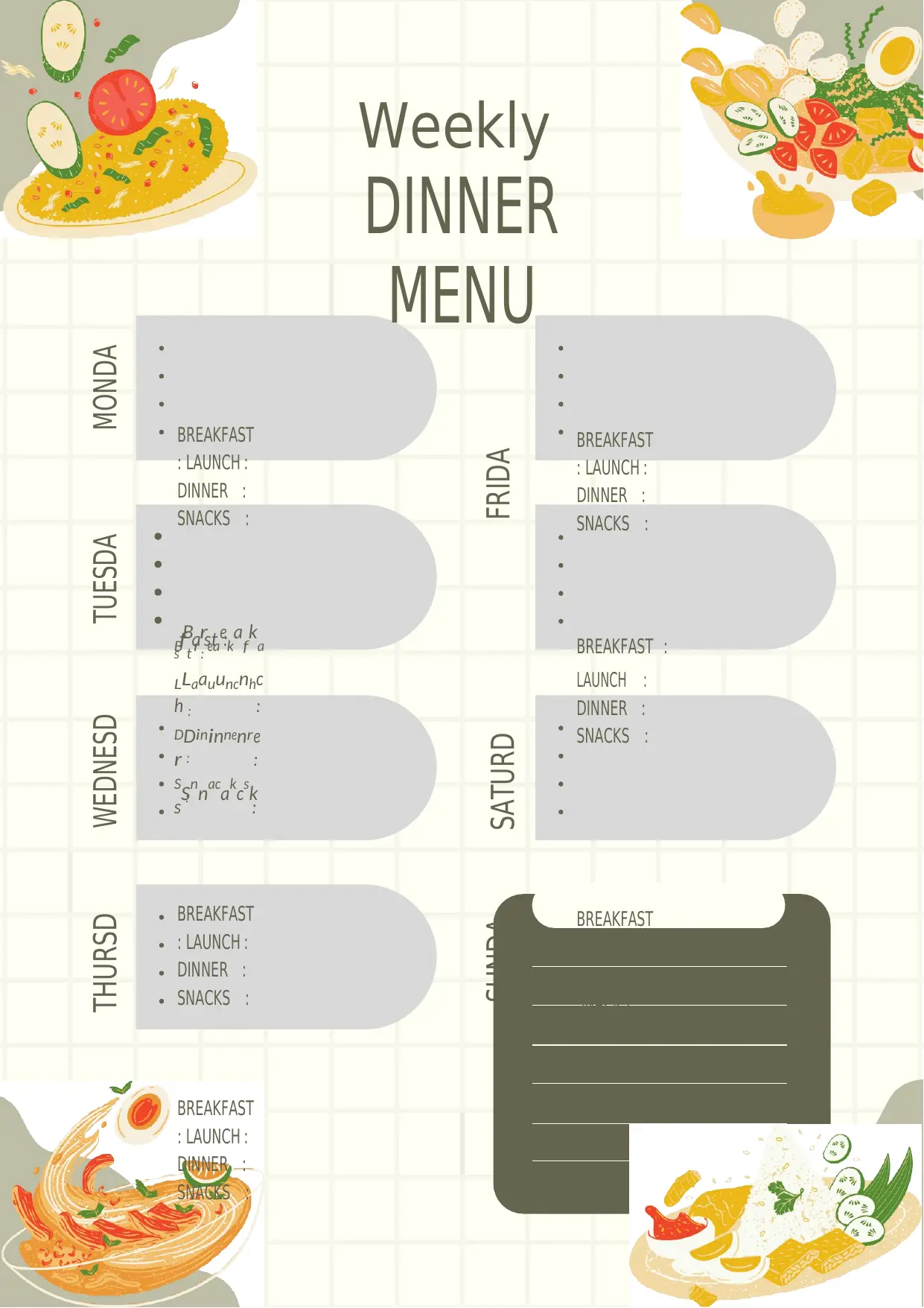
Benefit 1: Streamline Your Grocery Shopping
One of the greatest advantages of weekly dinner menu templates is their ability to streamline your grocery shopping. By planning out your meals in advance, you can create a comprehensive shopping list that includes all the ingredients you’ll need for the week. No more spontaneous trips to the supermarket or last-minute panic when you realize you’re missing a crucial ingredient. With a well-thought-out menu, you’ll have everything you need on hand, saving time, money, and stress.
Not only does this save you from the hassle of forgetting items, but it also helps you stick to your budget. With a planned menu, you can carefully choose recipes that make the most of ingredients you already have and take advantage of sales or discounts. By avoiding unnecessary purchases and reducing food waste, you’ll have more money to allocate to other household expenses or indulge in some extra treats.
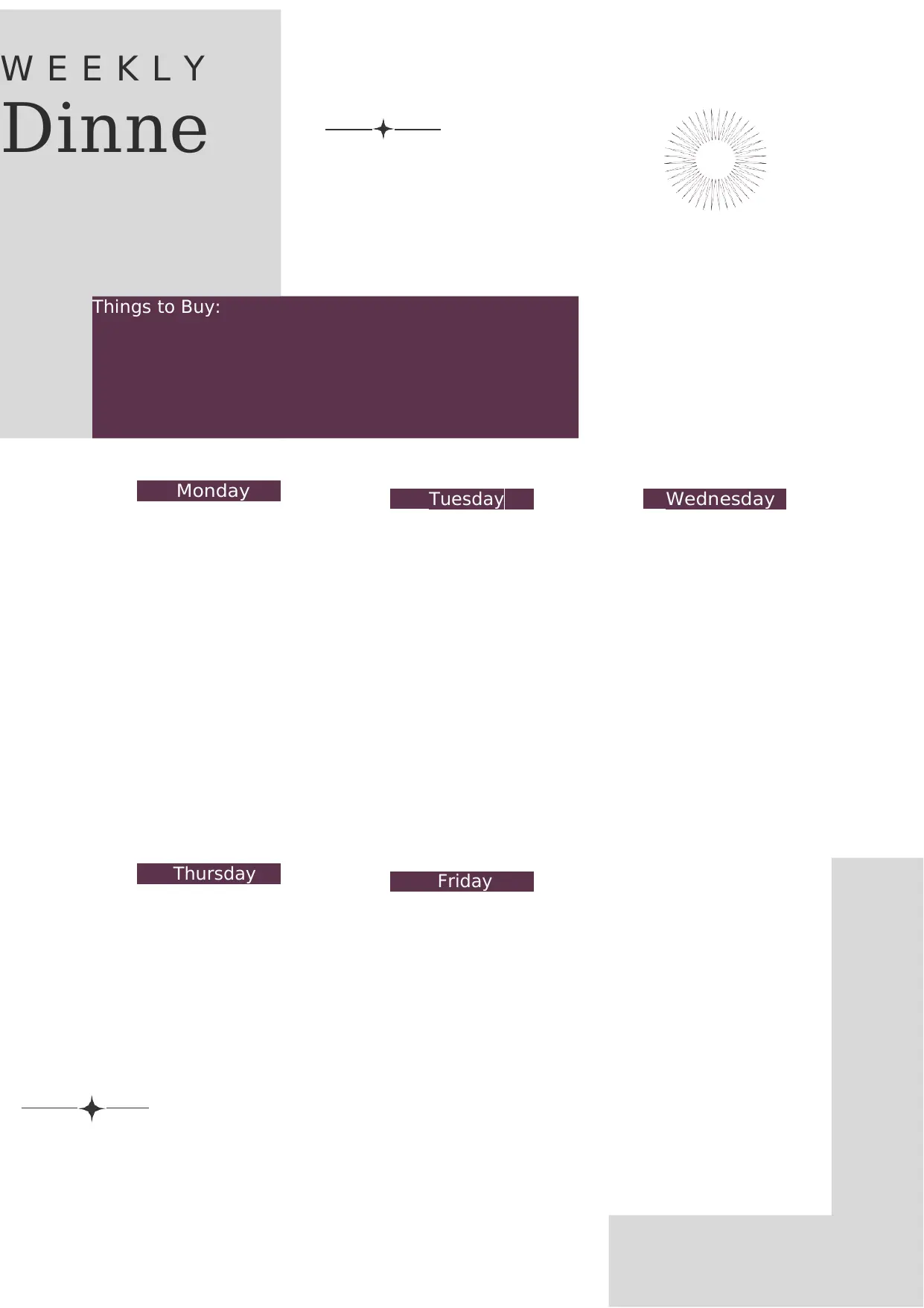
Benefit 2: Bring Variety and Excitement to Your Table
It’s easy to fall into a rut when it comes to cooking, relying on the same handful of recipes week after week. However, with weekly dinner menu templates, you can break free from this culinary monotony and infuse a sense of excitement into your meals. These templates prompt you to think creatively and experiment with new recipes and flavors.
Each week, you can choose a theme or cuisine to explore, allowing you to venture into uncharted culinary territories. From Italian pasta delights to spicy Mexican feasts or healthy Asian-inspired dishes, the options are endless. Try incorporating new ingredients or cooking techniques, and don’t be afraid to step out of your comfort zone. By introducing variety to your table, you’ll tantalize your taste buds and create memorable dining experiences for yourself and your loved ones.
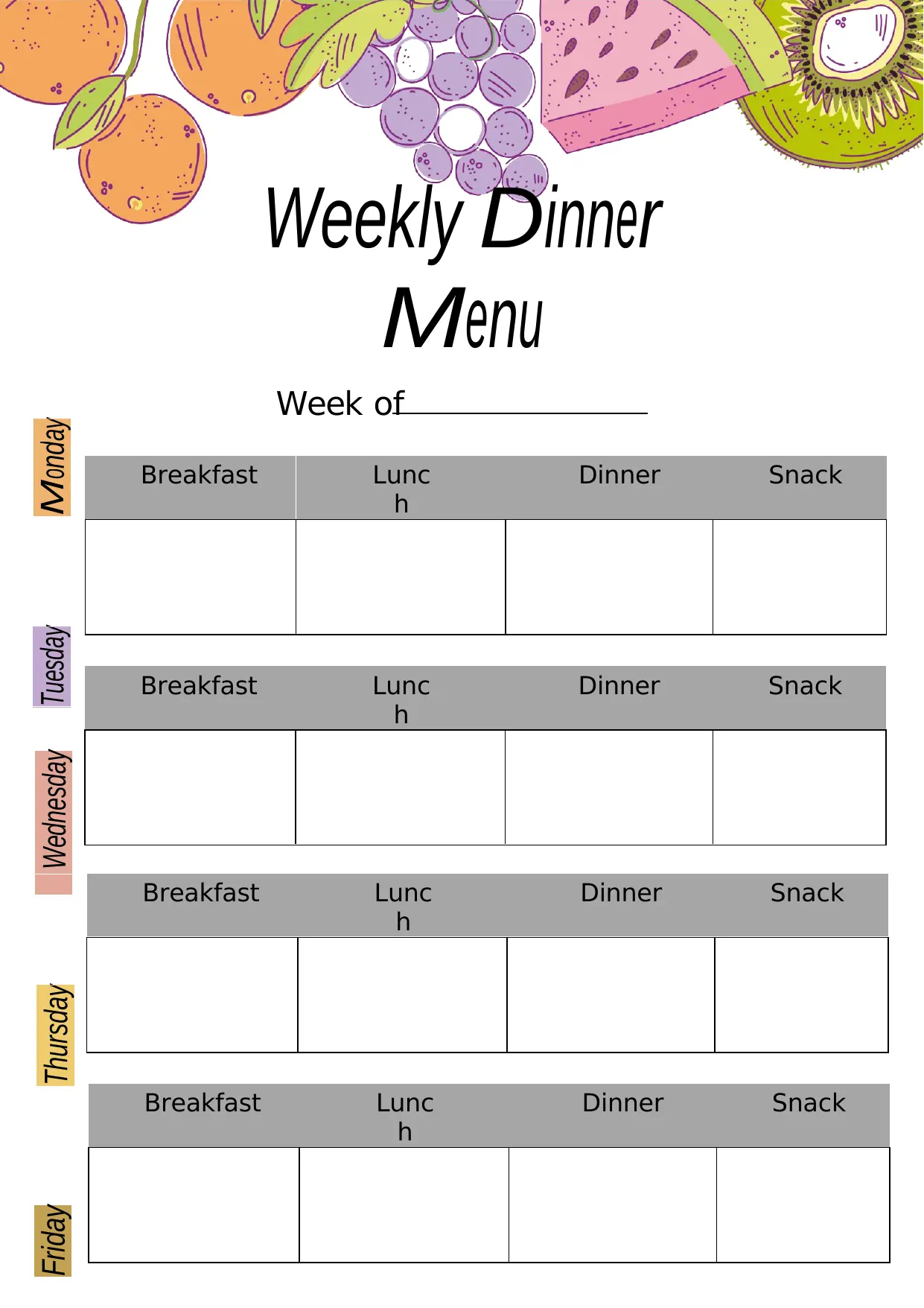
Benefit 3: Simplify Meal Preparation
Preparing meals can sometimes feel overwhelming, especially after a long day at work or when juggling multiple responsibilities. But fear not – weekly dinner menu templates are here to simplify your meal preparation process. With a pre-planned menu, you’ll know exactly what needs to be cooked each day, allowing you to better manage your time and workload.
By considering factors like cooking time, ingredient preparation, and kitchen equipment needed, you can organize your tasks efficiently. Some recipes may require more time and effort, while others can be quick and easy. With a balanced menu, you can alternate between elaborate dishes and simpler options to suit your schedule and energy level for each day. Say goodbye to dinner-related stress and hello to a more organized and enjoyable cooking experience.
Exploring Weekly Dinner Menu Templates: Finding Your Fit
1. Traditional Templates – The Classics Never Go Out of Style
Traditional weekly dinner menu templates are the bread and butter of meal planning. They typically consist of a grid or table format, with columns representing each day of the week and rows for breakfast, lunch, and dinner. These templates provide a clear overview of your entire week’s meals in a glance, allowing you to spot any imbalances or repetitive dishes.
For a more detailed approach, you can include breakfast and lunch options, ensuring you cover all mealtimes. This is particularly useful for those with specific dietary requirements or individuals following a strict eating regimen. Some templates also have designated spaces for notes or grocery lists, making them even more convenient and user-friendly.
Traditional templates are popular for a reason – they offer simplicity, functionality, and flexibility. They are easy to customize based on your needs and preferences, adapting to fit various household sizes or specific dietary restrictions. Whether you’re a fan of tried-and-true classics or enjoy a touch of personalization, traditional templates are an excellent starting point for embracing structured meal planning.
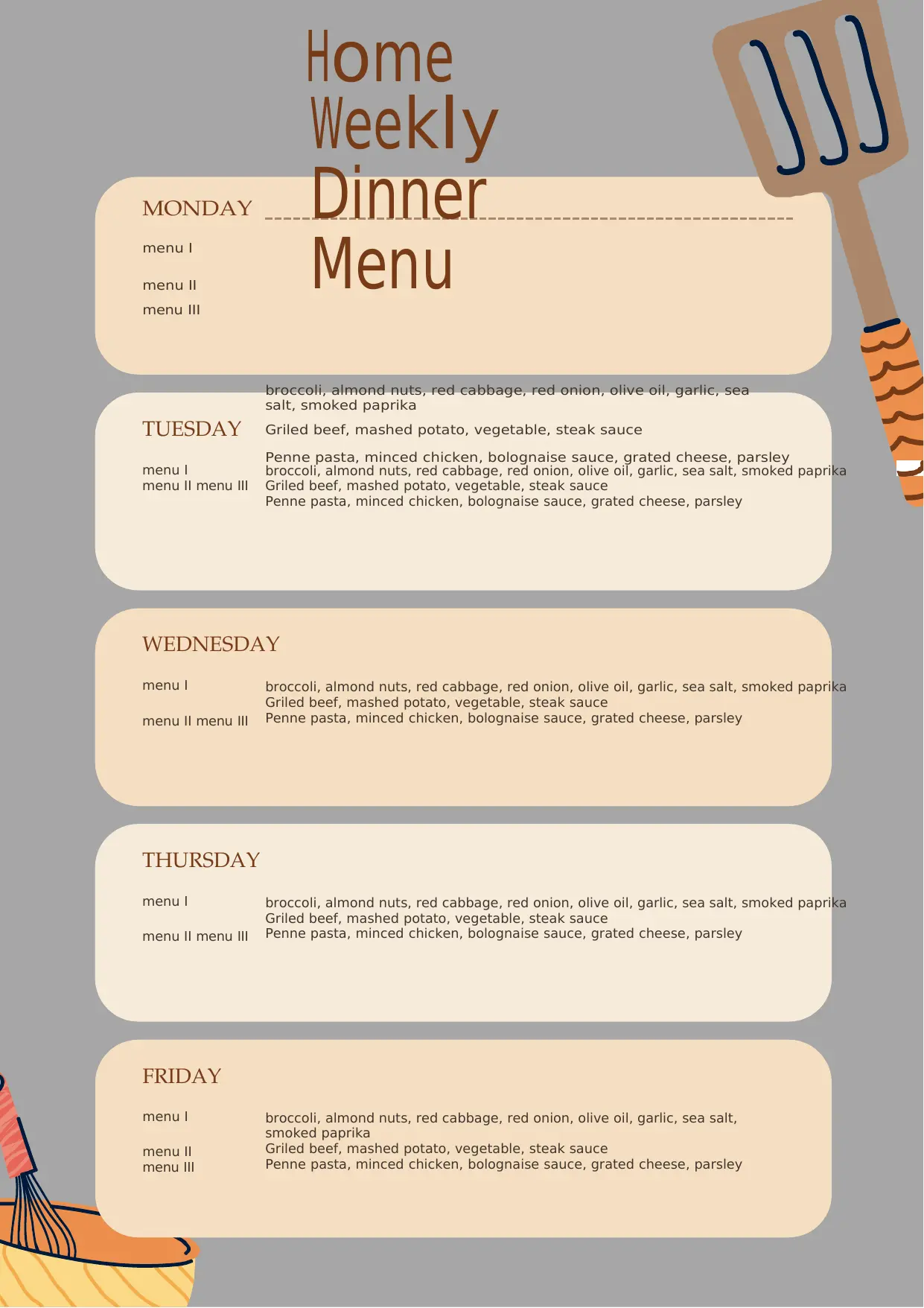
2. Themed Templates – A Culinary Adventure Awaits
If you’re in the mood for a more adventurous meal planning experience, themed templates are the way to go. These templates inject an extra dose of fun and creativity into your weekly dinners, allowing you to explore specific cuisines, ingredients, or cooking techniques.
With themed templates, every week becomes a new culinary adventure as you dive into the diverse offerings of various cultures or tackle specific dietary goals. For example, you can dedicate a week to Mediterranean delights, with recipes featuring olives, feta cheese, and vibrant vegetables. Or perhaps you’re inclined to indulge in a vegetarian-only week, discovering a whole range of plant-based culinary masterpieces.
Themed templates not only encourage variety in your diet but also provide a unique learning opportunity. By researching and experimenting with different flavors and cooking styles, you’ll expand your culinary knowledge and develop new skills. So, unleash your inner chef and embark on a themed culinary journey that will delight your taste buds and broaden your culinary horizons.
3. Interactive Templates – Get the Whole Family Involved
Meal planning can be a collaborative and interactive experience that involves the entire family. Interactive templates are a perfect way to engage and empower everyone, from kids to teenagers and adults. By letting each family member contribute their input, you can cater to individual preferences and foster a sense of ownership in meal planning.
Interactive templates often take the form of whiteboards or chalkboards hung in a central location, such as the kitchen or dining area. Each family member can write down their meal suggestions or favorite recipes, creating a visual menu that reflects everyone’s tastes. This approach not only ensures everyone gets a say in the weekly meals but also encourages creativity and culinary curiosity.
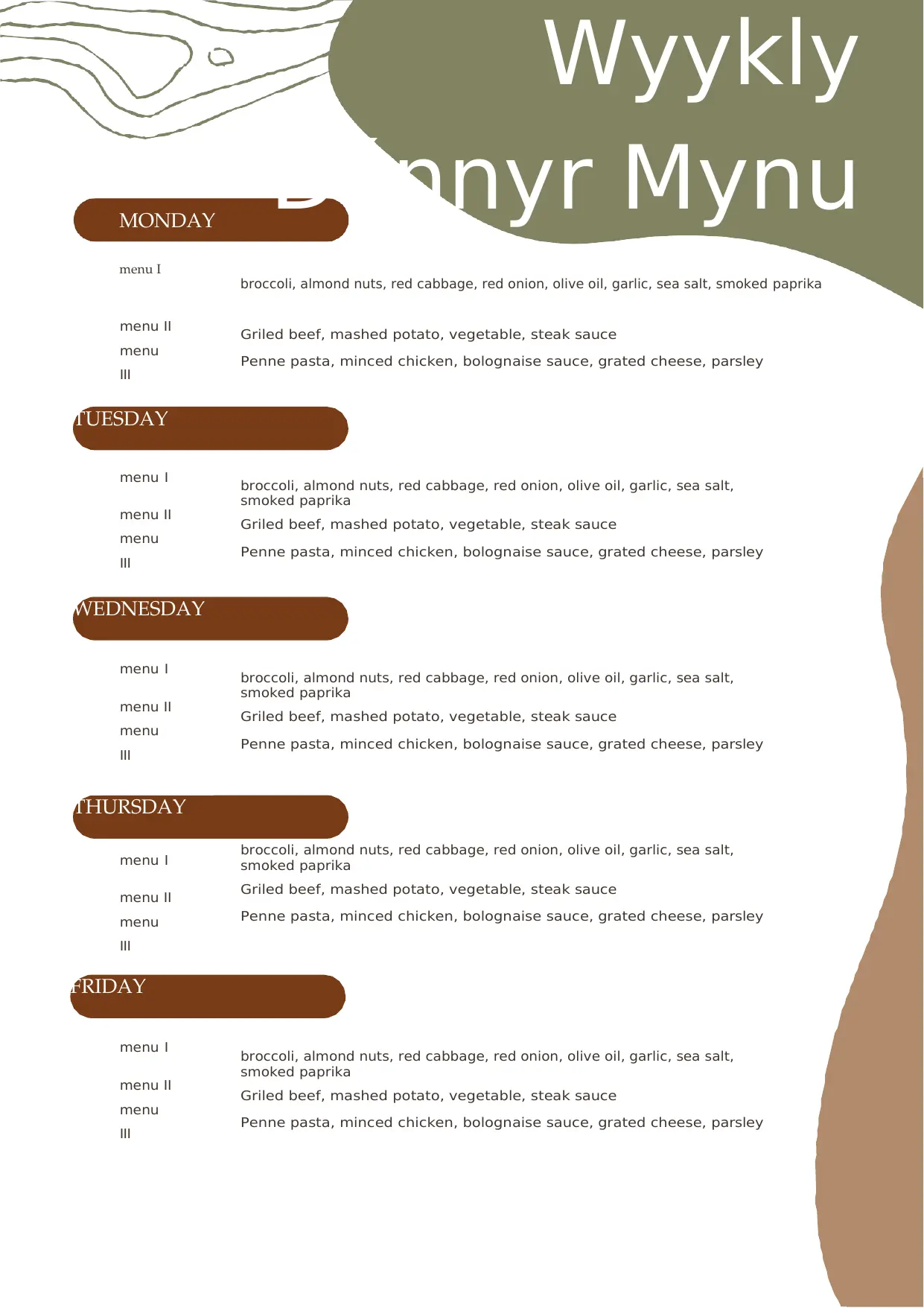
Further enhance the interactive experience by involving children in meal preparation. Assign them age-appropriate tasks like washing vegetables, measuring ingredients, or stirring mixtures. By actively participating in meal planning and cooking, kids develop essential life skills and gain a deeper appreciation for the effort that goes into creating delicious meals.
